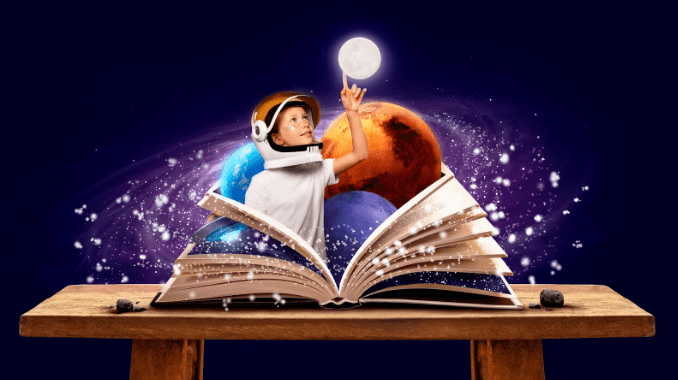
In a world pulsating with pixels and data streams, the canvas of education is being vividly repainted. Gone are the days where the wonders of science were limited to static pages and rigid diagrams. Today, a new era has dawned where digital narratives breathe life into once-complex concepts.
Imagine a neuron’s electric dance visualized in 3D or the clash of tectonic plates in an interactive simulation. The marriage of technology and science storytelling isn’t just a union—it’s a revolution. It promises a future where learning isn’t just passive absorption, but an immersive journey into the heart of discovery.
Interactive Elements in Modern Narratives
The integration of interactive elements into storytelling has reshaped how we consume and engage with content:
- Personalized Pathways: Readers no longer follow a single, linear path. They make choices, altering the narrative’s direction, and thus creating a unique experience tailored to individual curiosities.
- Engagement Amplified: Interactive features, from clickable infographics to drag-and-slide simulations, not only captivate but deepen understanding by fostering active participation.
- Feedback Loops: Quizzes, puzzles, and challenges interspersed within stories provide immediate feedback, reinforcing learning and bolstering retention.
- Diverse Learning Modes: Catering to auditory, visual, and kinesthetic learners, interactivity ensures inclusivity, making complex concepts accessible to all.
In this digital age, the narrative isn’t just told—it’s experienced, reshaping the boundaries between reader, learner, and explorer.
Visuals Simplifying Complex Concepts
The age-old adage, “A picture is worth a thousand words,” takes on profound meaning in the realm of scientific education. Visuals act as bridges, connecting the chasm between intricate theories and our understanding.
For instance, consider the intricate dance of cellular division. While textual descriptions can detail the process, a dynamic animation showcases the splitting chromosomes, their elegant ballet crystallized in mere moments. Or take the concept of gravitational waves, where a ripple-effect animation can convey what pages of equations might struggle to.
These visuals are not mere aids; they are transformative tools. They demystify, unravel, and beautifully lay bare the heart of scientific phenomena, turning the complex tapestry of knowledge into a comprehensible mosaic, piece by piece.
AR & VR in Science Storytelling
The fusion of Augmented Reality (AR) and Virtual Reality (VR) in science storytelling has catapulted education into dimensions once relegated to the realm of science fiction. Imagine students donning VR headsets to journey through the bloodstream, witnessing the white blood cells’ valiant defense against pathogens. Or consider an AR app that overlays geological formations onto a student’s immediate surroundings, letting them trace the eons-old history beneath their feet.
Museums, too, are harnessing this magic. The Smithsonian, for instance, offers VR experiences that transport visitors to prehistoric eras, letting them walk alongside long-extinct creatures. Through AR and VR, the abstract becomes tangible, and the distant becomes immediate, redefining the horizons of science education and engagement.
Gamification’s Role in Learning
In the modern era of education, gamification stands tall as a beacon of engagement and understanding. By integrating game-like elements into educational content, subjects spring to life in ways textbooks seldom achieve.
A sterling example is the innovative approach of BIOWARS. Rather than presenting the immune system as a dry, complex topic, they craft a compelling narrative, turning cellular battles into epic confrontations. Readers find themselves rooting for anthropomorphic immune cells, all while absorbing intricate biological knowledge.
By weaving gameplay and story, BIOWARS ensures its audience isn’t merely passive consumers but active participants in a grand educational adventure. Through such gamified storytelling, complex subjects become not just comprehensible, but truly enthralling.
Challenges in Digital Science Tales
The shift towards digital storytelling in science education comes with its unique set of challenges:
- Accuracy vs. Engagement: Striking a balance where complex topics remain scientifically accurate while being presented in an entertaining manner can be delicate.
- Accessibility Concerns: Not everyone has access to advanced digital platforms, potentially widening the educational divide.
- Over-reliance on Technology: The risk of students becoming too dependent on digital tools, sidelining traditional research methods and critical thinking.
- Updates and Maintenance: Digital content requires consistent updates to stay relevant, unlike static textbooks which have longer shelf lives.
While the potential of digital science narratives is vast, these challenges underscore the importance of thoughtful implementation to maximize benefits and minimize pitfalls.
Wrapping Up
The marriage of technology and science education paints a vibrant tableau of possibilities. From the immersive realms of AR and VR to the engaging twists of gamified content, digital storytelling is revolutionizing how we approach and absorb scientific concepts. Yet, like any frontier, it comes with its challenges—ensuring the dance between accuracy and engagement remains graceful, and ensuring access for all.
As renowned educator Sir Ken Robinson once said, “Innovation is hard because it means doing something that is new and different. And that means you have no idea how to do it.” But as we navigate this brave new world of digital science tales, one thing remains clear: our quest for knowledge, aided by technology, knows no bounds.



